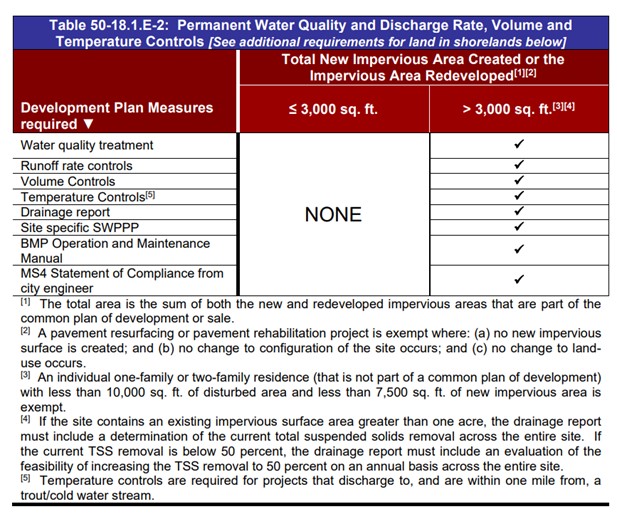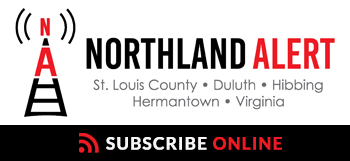Private Stormwater BMP Inspection & Maintenance Program
Stormwater runoff is generated from rain and snowmelt that flows over land or impervious surfaces, such as paved streets, parking lots, and building rooftops, and does not soak into the ground. According to the 1996 National Water Quality Inventory Report to Congress (Section 305(b) of the Clean Water Act), stormwater is the leading source of water pollution and can harm surface waters, such as lakes, rivers, streams and wetlands. Common pollutants in stormwater runoff include pesticides, fertilizers, oils, metals, pathogens, salt, sediment, litter and other debris. These pollutants are transported via stormwater runoff from a variety of sources including impervious surfaces.
Stormwater is NOT TREATED at the regional sewage treatment plant, Resource Renew (WLSSD). Excess stormwater runoff can also create flooding of private/public properties and rights-of-way.
Stormwater Permanent Structural BMPs (Best Management Practices) are facilities designed and constructed to manage and treat stormwater runoff. There are many types of Permanent Structural BMPs that provide water quality and/or flood control as part of the process of managing stormwater runoff. Typically, permanent structural BMPs are stormwater ponds, filtration basins, rain gardens, permeable pavement/pavers, underground sedimentation devices (underground chambers), manholes/catch basins with sumps, etc. A site may have more than one permanent structural BMPs, and more than one type.
See below for more information regarding different BMP Types along with inspection checklist requirements!
Per the City of Duluth Unified Development Chapter (UDC) Section 50-18.1.E, new developments and redevelopments with 3,000 square feet or greater of impervious surface must have permanent structural BMPs to help improve the quality and quantity of stormwater runoff from the site by providing water quality controls, runoff rate controls, volume controls, and temperature controls. A development may have been built prior to the UDC (2010), but previous building codes and stormwater requirements were in place that required permanent structural BMPs to be designed and constructed as part of that development.
City of Duluth UDC Section 50-18.1.E also requires the developer or owner(s) to be responsible for inspection, maintenance and reporting for all Permanent Structural Stormwater Best Management Practices (BMPs). An annual inspection and maintenance report must be submitted to the city. Inspection and maintenance must be performed on a regular basis, so the stormwater management facilities function as designed. Maintenance work and repairs identified in the annual report must be completed within a timely manner and approved by the city.
Permanent Structural Stormwater BMP(s) and devices are used to provide flood control and treat stormwater runoff and capture pollutants. These practices are needed, because stormwater runoff is untreated before flowing to receiving waters and help reduce the risk of flooding. City of Duluth has high quality water resources, that include Lake Superior, St. Louis Bay Estuary, wetlands and 60 local streams (16 of which are trout streams).
The City of Duluth has a permit MPCA MS4 Permit (Municipal Separate Storm Sewer System), as required by the Clean Water Act that requires the city to oversee and manage a stormwater pollution prevention program, one of the requirements is for the city to have a program that requires the documentation/recordkeeping of both inspections and maintenance activities regarding public and privately owned stormwater management facilities.
The goal of this requirement is to ensure permanent structural BMPs are functioning as designed and continue providing water quality improvements and flood control, to protect our water resources.
Stormwater management facilities must be maintained to function properly and without scheduled inspection and maintenance they will cease to function and may require costly repair work or replacement. Proper and regular maintenance can help reduce costs and keep BMPs functioning optimally.
BMP Types
This is list of the common types of BMPs found in the area along with description/function and timeline for required maintenance.
What to Expect/Your Responsibilities
If the city has a record of your BMP, you will receive a letter officially notifying you that that you are in the program. Single-Family and Two-Family Dwellings that are not part of a common plan of development are exempt from program.
If a stormwater BMP is on private property, the owner of the BMP is ultimately responsible for seeing that BMP is inspected and maintained. Below are the city’s recommendations for you and your team to prepare for this program.
- Research! Research! Research! Review your records to see if you have any building, civil and site plans showing the location and type of BMPs on your property. You may have an Operation and Maintenance Manual (O & M) supplied by the civil engineer who designed your site that provides details about inspection and maintenance specific to your site.
- Designate a person responsible who can inspect, maintain, and/or direct maintenance of permanent structural stormwater BMPs. This person needs to learn and understand how the BMP is designed to function, and if the BMP is functioning. If needed, you can reach out to private companies for assistance, Engineering Firms, Contractors, and Landscape Architects/Contractors.
Please note: If the BMP is inaccessible or/and has runoff rate or flood control, the designated inspector will need to submit proof that they are certified in the State of Minnesota. The University of Minnesota offers an Inspection and Maintenance of Permanent Stormwater Treatment Practices Certification. This certification or a professional engineer registered in the State of Minnesota would suffice.
- Have the designated person walk and inspect the site. Here is a link to the Inspection Checklist. *If the BMP is inaccessible or provides rate control, such as, underground detention chamber, a qualified professional should perform inspection and submit inspection reports specifically developed for the site.
- Create a maintenance schedule specific to your site.
- Submit your Inspection Checklist to us at StormUtility@duluthmn.gov by July 31st of every year.
If you have exhausted all resources and still require guidance, have the person responsible reach out to us at StormUtility@duluthmn.gov to review what plans we may have on record and/or schedule a site visit.
SAFETY REQUIREMENTS
DO NOT ENTER underground structures/confined spaces unless you are a trained professional. It is extremely dangerous and life threatening, if you are not trained and do not have the proper equipment. The city will not accept inspection/maintenance documentation from unqualified individuals. Please visit the U.S. Department of Labor Occupational Safety and Health Administration (OSHA) for more information.
WARNING before digging call Gopher State One Call - just dial 811. REQUIRED BY LAW. PRIVATE UTILITIES, which include the water and sewer services on your property, gas lines running from your house to a garage or gas grill, and others, are not owned by a utility and will not be marked by GSOC. Excavators and property owners must investigate private utility locations before digging.
Inspection Checklist
The completed inspection checklist, pictures and any required certification(s) can be emailed to StormUtility@duluthmn.gov.
- Minnesota Stormwater Manual: Stormwater Best Management Practice(s) (BMPs)
- United States Environmental Protection Agency (EPA): Stormwater Maintenance
- Minnesota Department of Natural Resources (DNR): Terrestrial Invasive Species

